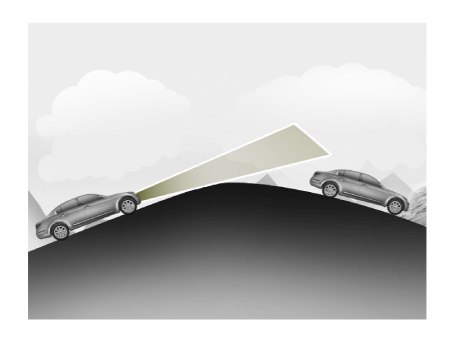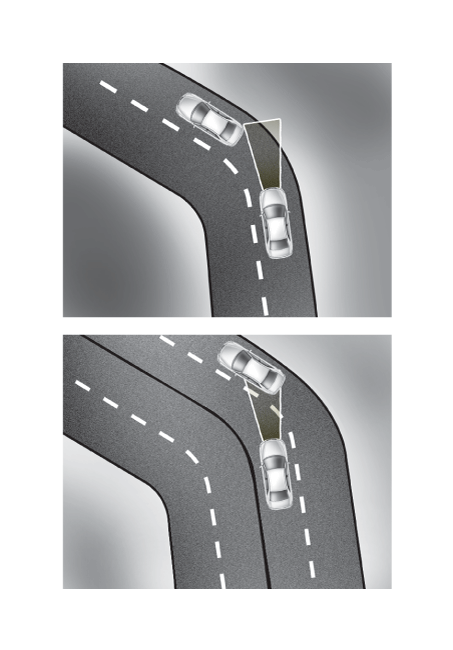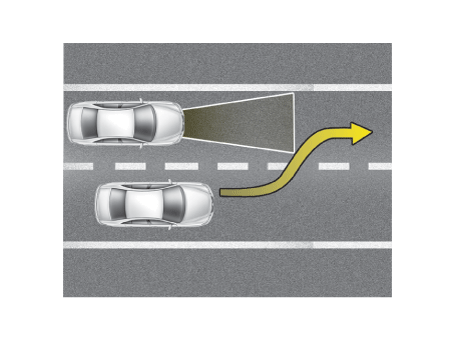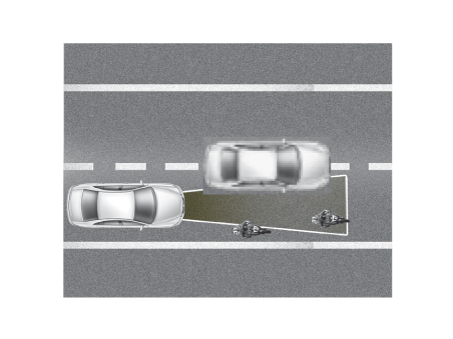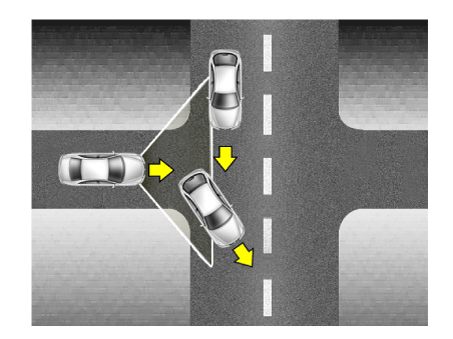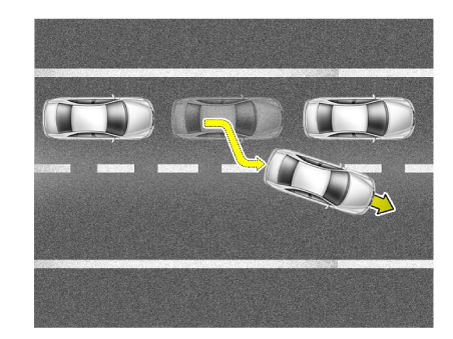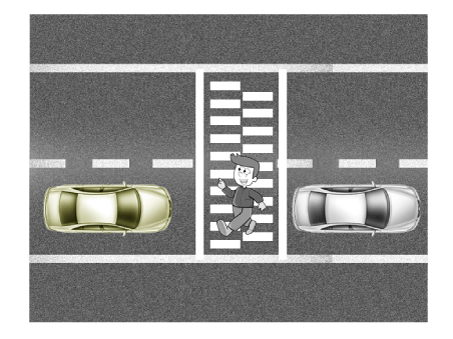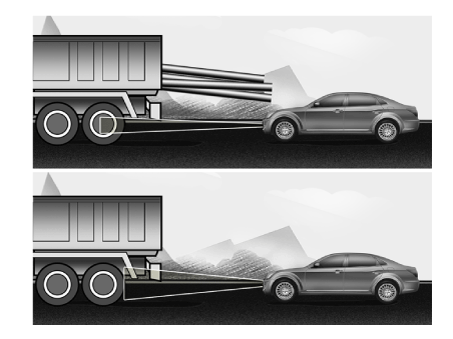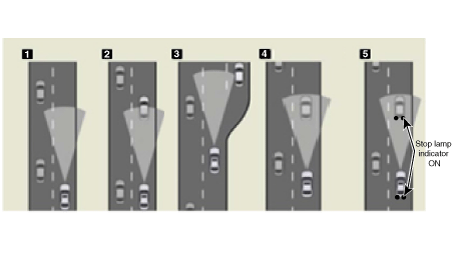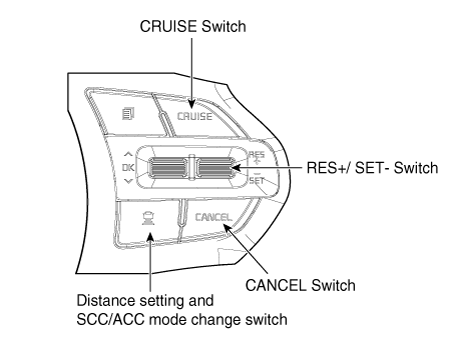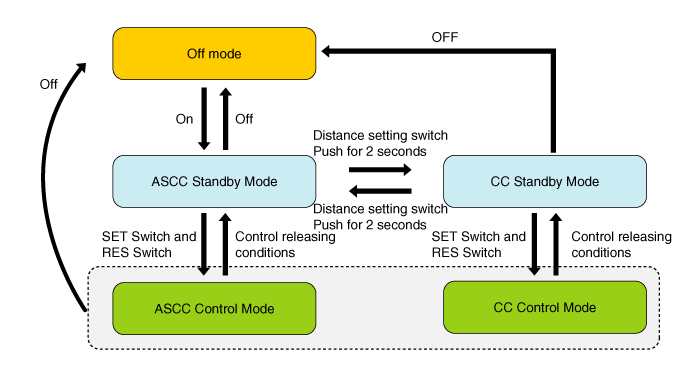Kia Stinger: Engine Electrical System / Smart Cruise Control (Stop & Go) System
General safety information and caution
| General Safety Information and Caution |
Be careful when driving the vehicle using the smart cruise control system as follows.
|
Description and operation
| Description |
The smart cruise control system allows a driver to program the vehicle to control the speed and following distance by detecting the vehicle ahead without depressing the brake pedal or the accelerator pedal.
| 1. |
Cruise speed control: The vehicle maintains the selected speed if there are no vehicles ahead. |
| 2. |
Retardation control: The vehicle decelerates if a vehicle ahead is detected. |
| 3. |
Following distance control: The vehicle maintains the selected following distance. |
| 4. |
Acceleration control: The vehicle accelerates to the selected speed if a vehicle ahead is not detected. |
| 5. |
Congested area control : In traffic, your vehicle will stop if the vehicle ahead of you stops. Also, if the vehicle ahead of you starts moving, your vehicle will start as well. However, if the vehicle stops for more than 3 seconds, you must depress the accelerator pedal or push the RES+ switch to start driving.
|
| 6. |
Control on curves
|
| 7. |
Warning alarm If the vehicle equipped the SCC decelerates because a vehicle ahead decelerates or moves into your lane, the warning will operate.
|
| 8. |
Accelerating by driver Even when the vehicle is being decelerated by the SCC system, the vehicle can be accelerated by applying the accelerator pedal. When the SCC system is on and driver depresses the accelerator pedal, the LCD display in the cluster will blink.
|
| 9. |
Function of cruise control The driver may choose to only use the cruise control mode (speed control function) by doing as follows: When the Smart Cruise Control system is on (SCC Standby mode), push the distance to distance switch for more than 2 seconds. "Smart cruise control (SCC) mode" and "Cruise control (CC) mode" can be selected. The speed control of the cruise control mode is the same as that of the smart cruise control mode. When using the cruise control mode, the driver must manually access the distance to other vehicles as the system will not automatically brake to slow down for other vehicles. |
Cruise main switch (CRUISE)
The smart cruise control system is engaged by pressing the cruise "ON/OFF" main switch.
Set/Coast switch (SET/–)
The "SET/–" switch located on the right-hand side of steering wheel column has two functions.
The set function - Push the "SET/–" switch and release it at the desired speed. Release the accelerator pedal. The desired speed will automatically be maintained.
At low speed of 10 - 180km/h (6mph - 111.8mph), there should be a vehicle in front of driver’s vehicle. The target speed is set to 30km/h (20mph).
The coast function - Push the "SET/–" switch and hold it when the smart cruise control is on. The vehicle will gradually slow down. Release the switch at the desired speed.
The desired speed will be maintained. Push the "SET/–" switch and release it quickly.
When pushing and releasing the "SET/-" switch quickly, the cruising speed will decrease by 1.0 mph. Also, when pushing and holding the "SET/-" switch, the cruise speed will decrease by 5.0 mph.
If the vehicle speed is above the set speed by applying the accelerator pedal, the vehicle speed will be the set speed. |
Resume/Accel switch (RES/+)
The "RES/+" switch located on the right-hand side of steering wheel column has two functions.
The resume function - If any method other than the cruise “ON/OFF” main switch was used to cancel cruising speed temporarily and the system is still activated, the most recent set speed will automatically resume when the "RES/+" switch is pushed.
The accel function - Push the "RES/+" switch and hold it when the smart cruise control is on. The vehicle will gradually accelerate. Release the switch at the desired speed. The desired speed will be maintained.
When pushing and releasing the "SET/+" switch quickly, the cruising speed will increase by 1.0 mph. Also, when pushing and holding the "RES/+" switch, the cruising speed will increase by 5.0 mph.
Cancel switch (CANCEL)
The cruise control system is temporarily disengaged by pushing the "CANCEL" switch.
Following distance control switch
This system assists you to set the distance from the vehicle ahead and maintain the selected following distance even when you do not push the accelerator or the brake pedal.
Select the appropriate following distance according to road conditions and vehicle speed.
Each time the button is pressed, the following distance changes as follows:
e.g., Distance 4 → Distance 3 → Distance 2 → Distance 1 → Distance 4
If you drive at 90 km/h (55.9 mph), the following distance maintains as follows:
Distance 4 - approximately 52.5m (172.2ft)
Distance 3 - approximately 40m (131.2ft)
Distance 2 - approximately 30m (98.4ft)
Distance 1 - approximately 25m (82.0ft)
The following distance of each stage is changed according to the speed of the vehicle ahead.
Schematic diagrams
| Trouble Symptom Charts |
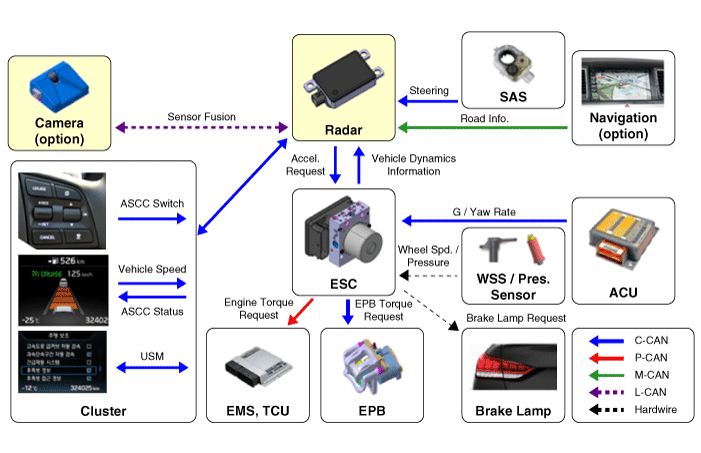
Component Parts And Function Outline
|
Component part |
Function |
|
Cruise Control Switch |
Input the set speed and distance to the SCC ECU. |
|
Instrument Cluster |
Display various information inputted from SCC. |
|
Smart Cruise Control Unit |
Recognize and track the vehicle ahead. Calculate the target speed and distance Request the acceleration and retardation to ESP |
|
VDC (HECU) |
Automatic braking and request the engine torque control to the engine (ECM)
Request the EPB torque control on the Electronic Parking Brake (EPB) Request the stop lamp indicator ON |
|
Engine (ECM) |
Control the engine torque |
|
Electronic Parking Brake (EPB) |
Control the EPB torque |
|
Stop lamp |
Stop lamp indicator ON |
- Smart Cruise Control (Stop & Go) (SCC) Unit-Radar
- Smart Cruise Control (Stop & Go) (SCC) Switch
- Smart Cruise Control (Stop & Go) (SCC) ECU
 Cruise Control Switch
Cruise Control Switch
Components and components location
Components
1. Left Remote Control Switch
(Audio + Bluetooth + Voice)
2. Right Remote Control Switch
(Trip Computer + ...
 Smart Cruise Control (Stop & Go) (SCC) Unit-Radar
Smart Cruise Control (Stop & Go) (SCC) Unit-Radar
Specifications
Specification
Item
Specification
Power supply(V)
12
Operation voltage (V)
9 - 16
...
Other information:
Kia Stinger CK 2018-2025 Service Manual: Crankshaft Damper Pulley
Repair procedures Removal 1. Remove the engine room front under cover. (Refer to Engine and Transmission Assembly - "Engine Room Under Cover") 2. Remove the drive belt and water pump belt. (Refer to Drive Belt System - "Dri ...
Kia Stinger CK 2018-2025 Service Manual: Brake switch
Components and components location Components 1. Brake switch 2. Brake pedal Schematic diagrams Terminal function Pin No Description 1 IGN1 2 IBU ...


